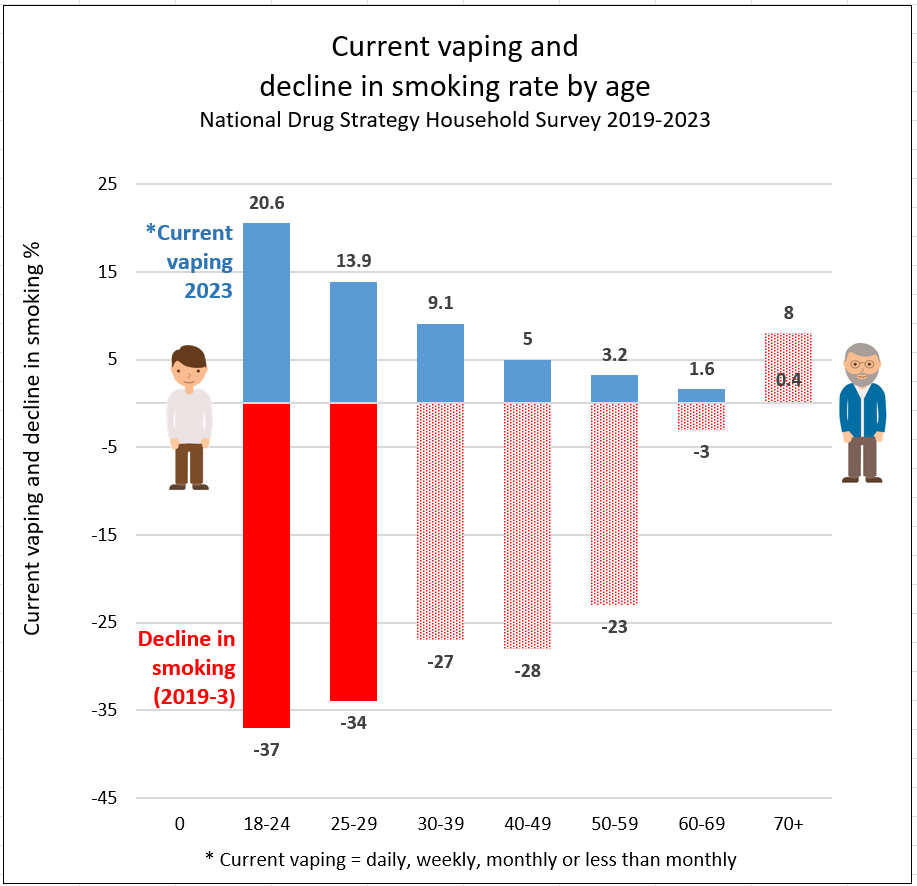
National Heart Foundation slams vaping with flawed evidence
Posted on August 31, 2024 By Colin
THE NATIONAL HEART FOUNDATION (NHF) has recently intensified its attack on vaping, claiming that “e-cigarettes and vaping are damaging to cardiovascular health” and that vaping serves as a gateway to smoking. However, the evidence it presents is flawed and misinterpreted, failing to substantiate these claims.
The NHF's assertions are prominently featured in its submission to the Victorian Parliamentary Inquiry into vaping (here) and in a recent media release. (here)
Heart attack risks
One of the NHF's claims is that “One recent study found that any use of e-cigarettes is associated with a 33% increased risk of having a heart attack when compared to people that have never used e-cigarettes.” This reference comes from a study which suggests an association between vaping and heart attacks but does not establish causation. (Sharma 2024)
Importantly, this type of study cannot prove causation. As highlighted in the study, “All the included studies in the meta-analysis are cross-sectional studies, thus ruling out any interpretation on the causal association between the studied variables.” This correlation is more likely attributed to prior smoking rather than vaping itself.
Heart failure concerns
The NHF further claims that “people who used e-cigarettes at any point were 19% more likely to develop heart failure compared with people who had never used e-cigarettes.” This statement refers to a brief conference abstract that reviewed four studies. (Bene-Alhasan 2024) However, the abstract was not peer-reviewed and should not have been cited until more comprehensive details were available.
Furthermore, the study only indicates an association between vaping and heart failure without proving that vaping is the cause. The authors also note, “All the included studies in the meta-analysis are cross-sectional studies, thus ruling out any interpretation on the causal association between the studied variables.”
Alternative explanations for the observed association must also be considered, such as past smoking habits and reverse causation—where individuals may take up vaping as a response to existing health concerns.
The gateway myth
The NHF claims that “e-cigarette use is the strongest risk factor for initiation of tobacco smoking among Victorian teenagers aged 14-17.” This assertion, based on a study by Scully, erroneously suggests that vaping causes young people to start smoking. (Scully 2023) In reality, the study only found an association between e-cigarette use and susceptibility to smoking. The authors themselves acknowledged that, due to the cross-sectional nature of the research, “we are unable to draw any causal inferences about the observed associations.”
The NHF also cites that “the highest prevalence of e-cigarette use was found in the 18 to 24-year-old age bracket,” raising concerns about vaping among young adults. However, panic regarding vaping in this demographic is premature, as data from the National Drug Strategy Household Survey (NDSHS 2022-23) shows that smoking rates are declining at the fastest rate in this age group, likely due to the effect of vaping. Other studies have confirmed this finding in the US and UK. (Floxon 2022; Meza 2023; Tattan-Birch 2024)

Moreover, the NHF’s claim that “growing evidence suggests that vaping, especially by young people who have never smoked, increases the risk of initiation of tobacco smoking” overlooks crucial evidence indicating that vaping first (before smoking) may actually reduce the likelihood of young people transitioning to smoking. (Shahab 2020; Mus 2023; Legleye 2020)
Research suggests that some young people who try vaping may later smoke. However, this progression is likely due to a predisposition for risk-taking behaviour, rather than vaping itself being a gateway. (Vanyukov 2012) Importantly, population studies indicate that smoking rates are declining faster as youth vaping rates increase, suggesting that vaping is diverting young people away from smoking altogether. (Sokol 2021; Selya 2021; Walker 2020)
For a comprehensive analysis debunking the gateway theory, the Heart Foundation authors should read Arielle Selya's recent comprehensive analysis. (Selya 2024)
What does the evidence say?
There is currently no definitive evidence that vaping increases the risk of cardiovascular harm. Long-term epidemiological studies are needed to provide more conclusive answers.
However, the potential harm is likely to be small in most cases and significantly less than that caused by cigarette smoking. The risk is greatest in heavy or long-term vapers and those with pre-existing cardiovascular conditions.
In contrast, the evidence is clear that switching from smoking to vaping substantially reduces the risk of cardiovascular disease. See my review of the evidence here.
Conclusion
We should expect nothing less than the highest scientific standards from Australia's leading heart charity. However, the National Heart Foundation's recent statements on vaping lack robust scientific backing and misinterpret the available evidence.
As evidence increasingly supports the role of vaping in reducing smoking rates, it is crucial for health organisations to base their recommendations on sound science rather than fear-based narratives. A more nuanced approach that considers the evidence and the potential harm reduction benefits of vaping is essential for public health discourse.
Resources
National Heart Foundation submission to Victorian Parliamentary Inquiry into vaping. 5 April 2024
Proposed vaping legislation in Tasmania. NHF media release. 30 August 2024